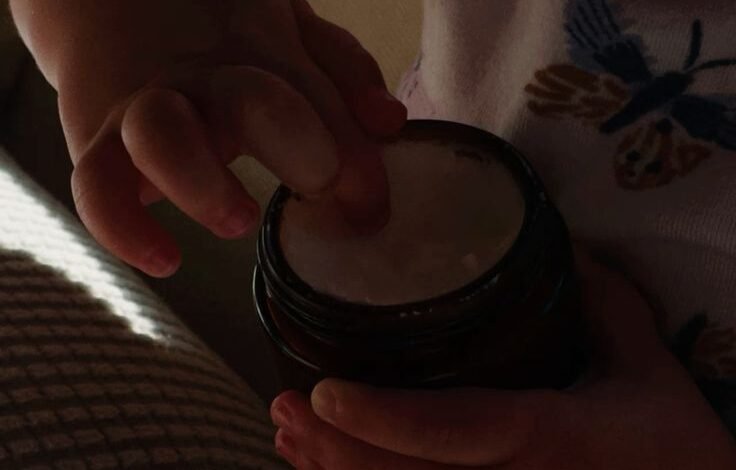Beef Tallow for Eczema – Benefits and How It Helps
Beef Tallow for Eczema – Benefits and How It Helps

Eczema is more than just dry, irritated skin—it’s a condition that affects millions worldwide, leaving many searching for relief. From prescription creams to dietary changes, eczema sufferers often find themselves trying everything under the sun to soothe their symptoms. But what if we told you there’s a centuries-old natural remedy you might have overlooked? Enter beef tallow.
Historically used for skin care and healing wounds, this humble ingredient is making a comeback for its potential benefits in eczema treatment. But how effective is it? And what makes it stand out among other remedies? This post dives deep into the science and application of beef tallow as a natural solution for eczema.
Understanding Eczema
Before exploring beef tallow, it’s essential to understand eczema and what it entails.
What is Eczema?
Eczema (also known as atopic dermatitis) is a chronic skin condition characterized by inflammation, redness, itching, and dryness. It can present in different forms, with the most common types being:
- Atopic Dermatitis – The most common type, often associated with allergies and asthma.
- Contact Dermatitis – Triggered by direct contact with irritants or allergens.
- Dyshidrotic Eczema – Causes itchy blisters on the hands and feet.
- Nummular Eczema – Appears as round, coin-shaped spots on the skin.
- Seborrheic Dermatitis – Affects oily areas, such as the scalp or face.
What Causes Eczema to Flare Up?
Eczema is a complex condition with no single cause. However, several factors can trigger or worsen its symptoms:
- Environmental allergens like pollen, pet dander, and dust
- Harsh soaps, detergents, or fragrances
- Stress or emotional health
- Weather changes (cold, dry air)
- Food allergies or sensitivities
- Genetic predisposition
While there is no cure, managing eczema often involves a combination of treatments and lifestyle changes.
The Science Behind Beef Tallow
Now, where does beef tallow fit into the eczema conversation? Understanding its composition reveals why it might help.
What is Beef Tallow?
Beef tallow is rendered fat from cattle. While typically associated with traditional cooking methods, beef tallow has long been used in homemade skincare remedies. It’s rich in healthy fats, including:
- Omega-3 and Omega-6 fatty acids – Known for their anti-inflammatory properties.
- Vitamin A – A natural moisturizer that supports skin repair.
- Stearic acid and palmitic acid – Fatty acids that help lock in moisture and strengthen the skin’s protective barrier.
How Does Beef Tallow Benefit Eczema-Prone Skin?
Unlike synthetic moisturizers, beef tallow closely matches the composition of the skin’s natural oils (called sebum). This makes it particularly effective for people with compromised skin barriers, such as eczema sufferers. Here’s how it helps:
- Deep Hydration: Tallow penetrates deeply into the skin, providing intense hydration without clogging pores.
- Barrier Repair: Its fat content helps reinforce the skin’s lipid barrier, protecting against irritants and preventing water loss.
- Anti-Inflammatory Properties: Omega-3 fatty acids in tallow reduce redness and inflammation—a common struggle for eczema patients.
- Supports Healing: Vitamin A and other nutrients promote cell regeneration and repair damaged skin.
Using Beef Tallow for Eczema
While the science behind beef tallow is promising, proper application is key to maximizing its benefits.
Step-by-Step Guide to Using Beef Tallow
- Source Quality Tallow: Look for grass-fed, organic beef tallow to ensure purity and avoid harmful additives or pesticides.
- Cleanse Gently: Before application, wash the affected area with a gentle, fragrance-free cleanser.
- Warm the Tallow: Scoop a small amount of tallow and warm it in your palms until it becomes easier to spread.
- Apply to Skin: Gently massage the tallow onto eczema-prone areas in a thin, even layer.
- Repeat as Needed: Use it 1–2 times a day or as often as your skin needs hydration.
Real-Life Testimonials
The growing popularity of beef tallow for skin care has inspired countless anecdotal success stories:
- “After trying endless lotions and creams, I gave beef tallow a shot. Within weeks, my chronic eczema patches began to fade!” – Karen S.
- “I was skeptical at first, but tallow has become my go-to moisturizer. It’s natural, soothing, and doesn’t irritate my skin.” – Jake M.
Comparing Beef Tallow with Other Treatments
Is beef tallow the best option for eczema? Here’s how it stacks up against other treatments:
Conventional Treatments
- Topical Steroids: Offer quick relief but may thin the skin with prolonged use.
- Moisturizers with Ceramides: Help restore the skin barrier but often contain synthetic additives or irritants.
- Antihistamines: Reduce itching but only work for certain triggers.
Other Natural Remedies
- Shea Butter: Provides hydration but lacks tallow’s fatty acid profile.
- Coconut Oil: Offers antimicrobial properties but may be too greasy or trigger sensitivities.
- Oatmeal Baths: Soothe inflammation but offer only temporary relief.
Potential Side Effects of Beef Tallow
Despite its benefits, beef tallow may not suit everyone. Some potential concerns include:
- Sensitivity to Animal Products: Tallow is not suitable for vegans or those with allergies to beef.
- Odor: Tallow has a natural, mild scent that may take some getting used to.
It’s always wise to perform a patch test and consult a dermatologist before adding any new product to your routine.
Unlock the Potential of Beef Tallow for Eczema
Eczema is a challenging condition that often requires a personalized approach to treatment. Beef tallow offers a natural, nutrient-packed alternative that has helped many soothe their symptoms while nourishing their skin.
That said, not every remedy will work for everyone. Always consult your healthcare provider to ensure it’s a good fit for your unique skin needs.
Have you tried beef tallow or other natural treatments for eczema? Share your thoughts, questions, or personal experiences in the comments below. Your story could inspire someone else to find relief!
For more tips on managing eczema naturally, explore our [related resources here]. Together, we can uncover solutions that work.



